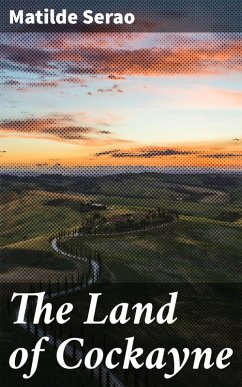In 'The Land of Cockayne,' Matilde Serao immerses readers in a rich tapestry of late 19th-century Italian society, exploring themes of decadence and disillusionment against the backdrop of rapid industrialization. Written in a lyrical yet incisive prose, Serao navigates the intricate lives of her characters, probing their aspirations and despair within a society on the brink of modernization. The novel juxtaposes the allure of urban life with the nostalgia for rural simplicity, evoking a distinct sense of place that is both enchanting and suffocating, a hallmark of Serao's literary style which deftly balances realism with a touch of romanticism. Matilde Serao, a pioneering figure in Italian literature and a prominent journalist, was notably the first woman to establish a significant presence in the literary and cultural discourse of her time. Serao's own experiences as a Neapolitan and her observations of class struggles and gender dynamics deeply informed her writing. Her commitment to amplifying marginalized voices reflects her innovative spirit and positions her as a precursor to later feminist literature. Readers seeking a profound exploration of societal contrasts and human emotion will find 'The Land of Cockayne' an enriching and thought-provoking experience. Serao's ability to weave complex narratives makes this novel a timeless exploration of the human condition, inviting readers to reflect on their own societal landscapes.
Dieser Download kann aus rechtlichen Gründen nur mit Rechnungsadresse in A, B, BG, CY, CZ, D, DK, EW, E, FIN, F, GR, H, IRL, I, LT, L, LR, M, NL, PL, P, R, S, SLO, SK ausgeliefert werden.









